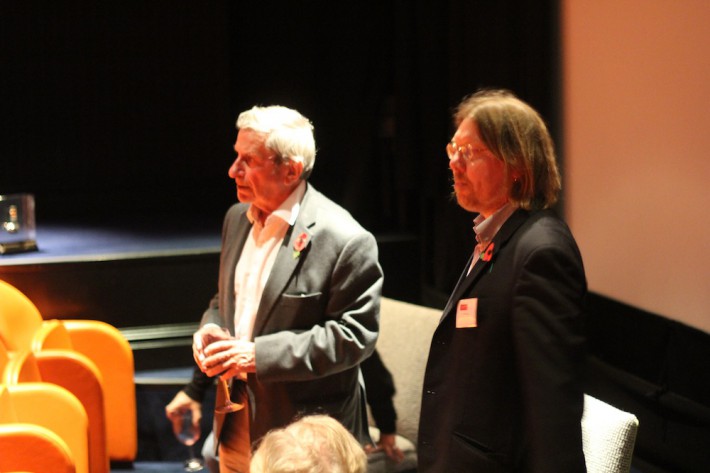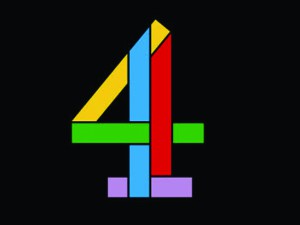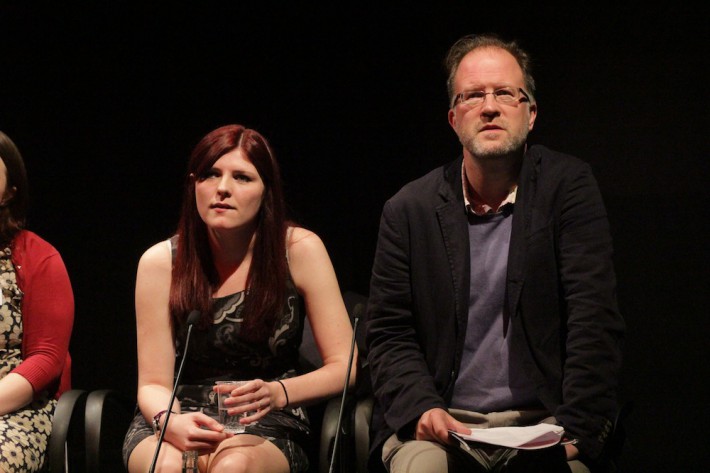To celebrate the thirtieth anniversary of the launch of Channel 4, in November the University of Portsmouth held a two-day conference dedicated to the output of the UK’s fourth terrestrial TV channel. Dr Ieuan Franklin provides an overview of the event.
 About the Author: Dr Ieuan Franklin is the Research Assistant on the AHRC-funded Channel 4 Television and British Film Culture project. His publications include: ‘Think-Tape : The Aesthetics of Montage in the Post-War Television Documentary ‘, in J. Jacobs and S. Peacock (Eds.), Television Aesthetics and Style (Continuum - forthcoming, 2013) and 'Rambling House and The Barrelman: folklore and audience participation in radio broadcasting in Ireland and Newfoundland' in Across the Water: Irish Journal of Newfoundland and Labrador Research 1(1), 13-32 (2009).
About the Author: Dr Ieuan Franklin is the Research Assistant on the AHRC-funded Channel 4 Television and British Film Culture project. His publications include: ‘Think-Tape : The Aesthetics of Montage in the Post-War Television Documentary ‘, in J. Jacobs and S. Peacock (Eds.), Television Aesthetics and Style (Continuum - forthcoming, 2013) and 'Rambling House and The Barrelman: folklore and audience participation in radio broadcasting in Ireland and Newfoundland' in Across the Water: Irish Journal of Newfoundland and Labrador Research 1(1), 13-32 (2009).
On the evening of the 1st November, Sir Jeremy Isaacs, Channel 4’s first Chief Executive, led a reunion of the team behind Stephen Frears’ landmark ‘Film on Four’ My Beautiful Laundrette at a gala screening of the film at London’s Charlotte Street Hotel. Author Hanif Kureishi and Senior Commissioning Editor David Rose recalled the genesis of the 1985 hit which established Channel 4 as a serious sponsor of feature film for cinema, made a star of Daniel Day-Lewis, launched the career of Hanif Kureishi, and set Working Title Films on course to become the most successful British producers of all time.
The screening marked the highpoint of a two-day conference held at BFI Southbank, organised by The University of Portsmouth, and timed to coincide with Channel 4’s 30th birthday on 2nd November (www.c4film.co.uk). The conference brought together media historians and key personnel from the film and television industries to review Channel 4's contribution to British film culture over three decades, and to debate the future of public service broadcasters’ support for UK film. The conference was the centre-piece of a four-year research project sponsored by the Arts and Humanities Research Council, in partnership with the British Universities Film and Video Council.
Day 1
Professor John Hill (Royal Holloway), co-editor of Big Picture, Small Screen (1996), set the scene with a keynote address that launched the conference and mapped out four key phases in the development of Channel 4’s relationship with UK film. In doing so it also gave a valuable synoptic overview of British film policy, from the Annan Report (1977) to the BFI’s Opening Our Eyes (2012).
Channel 4, with its introduction of a post-Fordist model of decentralized independent production, was aptly dubbed by Hill 'a child of Thatcher', but it emerged as an unruly child, with its commitment (mandated under the 1980 Broadcasting Act) to experiment and innovation (play!) undergirded by these very independent production companies and film/video workshops.
Under Thatcher the British film industry was exposed to the harsh winds of competition with the abolition of the British film quota, the NFFC and the Eady Levy, and ultimately it was Channel 4 that stepped up to fill the gap in terms of subsidy. In 1982 (when Channel 4 was launched) only 4% of UK film production was financed by television; by the end of the 1980s it was 40%, a remarkable transformation of the landscape.
The first panel, entitled ‘Exploding the Canon’ expanded on Hill’s thoughts about the ‘socio-cultural provenance’ of Film on Four, with papers by Andy Willis, Felicia Chan and Claire Monk. Willis and Chan showcased two films funded by C4 which dealt with the experiences of Chinese communities in Britain – Ping Pong (1986) and Soursweet (1988). Partly due to the ‘canonization’ of films like Laundrette, these films have been consigned to relative obscurity, despite their originality and ground-breaking nature (Ping Pong is thought to be the first film by a British Chinese director to gain a theatrical release). Chan and Willis explained that the East Asia diaspora has tended to be overlooked by British film culture whereas Chinese visual artists have not suffered the same marginalization. Claire Monk explored the absence of heritage and period films in the Film4 brand, due to the channel’s association with radical and social realist film. Monk elaborated the ‘discursive framing’ by C4 of Maurice, a film that C4 funded which is now widely discussed in Internet fan circles but which was at first ignored and then treated ironically by the channel (e.g. in an edition of the LGBT series Out on Tuesday called White Flannel).
Prof. John Ellis then introduced a programme of archival screenings from Large Door Productions’ (the independent production company Ellis co-founded) landmark series Visions (1982-85), which gave a full sense of the diversity of film content it was able to broadcast during that period, and featured the late Marc Karlin’s highly personal and poignant essay on the British film industry, A Dream from the Bath (1985).

Sir Jeremy Isaacs and Dr Justin Smith.
The second panel explored regional film culture, although two of the papers were actually about the film culture of a nation, rather than a region – the Welsh films supported by S4C. Elain Price outlined the 'seemingly impossible task' S4C faced of attempting to cater to both a (predominantly rural and traditional) minority Welsh-speaking audience and an urban audience largely sympathetic with C4’s pluralistic project. In comparison, C4 had the freedom to pursue a policy of treating Welsh-language films just like any foreign-language film from around the world (the channel was a great supporter of what would now be termed ‘World Cinema’). Kate Woodward explored the issue of language and Welsh film, highlighting the intriguing trend for shooting films ‘back-to-back’ in Welsh and English, and imaginative approaches to European co-productions and the attempt to ‘internationalize’ Welsh films. Roger Shannon, Paul Long and Yasmeen Baig-Clifford then gave a fascinating presentation about the Birmingham Film and Video Workshop (BFVW), one of the workshops franchised under the ‘Workshop Declaration’ agreed between C4, the British Film Institute, the Regional Arts Associations, and the (broadcasting union) ACTT. We heard about the political context surrounding the workshop movement, the participatory production ethos of the workshop, and, finally, how Vivid, a Birmingham-based arts organization who themselves adopted the workshop model in terms of their adherence to equal pay and a collective ethos, have digitized the archive of the BFVW and have conducted a definitive oral history of the workshop.
 The third panel of the day tackled Channel 4’s involvement in print culture: Holly Aylett explained C4’s influence on (and early sponsoring of) Vertigo (a magazine devoted to independent film and video now maintained by the Close Up Film Centre), and Linda Kaye and Rachael Keene discussed their work in the digitization of Channel 4’s weekly Press Information Packs (see above). Like Channel 4, Vertigo stood for independence, innovation and internationalism – unlike Channel 4, Vertigo had an ‘i’ in its name which stood for these things! Kaye and Keene’s paper illustrated exactly how close collaboration can take place between researchers, archivists and software programmers in creating resources for the digital humanities, drawing on their recent work for the Channel 4 and British Film Culture project.
The third panel of the day tackled Channel 4’s involvement in print culture: Holly Aylett explained C4’s influence on (and early sponsoring of) Vertigo (a magazine devoted to independent film and video now maintained by the Close Up Film Centre), and Linda Kaye and Rachael Keene discussed their work in the digitization of Channel 4’s weekly Press Information Packs (see above). Like Channel 4, Vertigo stood for independence, innovation and internationalism – unlike Channel 4, Vertigo had an ‘i’ in its name which stood for these things! Kaye and Keene’s paper illustrated exactly how close collaboration can take place between researchers, archivists and software programmers in creating resources for the digital humanities, drawing on their recent work for the Channel 4 and British Film Culture project.
Day 2
Kicking off the second day of the conference, the fourth panel examined film programming and programmes on film. Sheldon Hall gave a witty paper on C4’s bold and eclectic approach to film acquisition and scheduling, which could be summed up poetically as follows (apologies to WW):
Bliss it was in that dawn of Channel 4 (for a film buff) to be alive,
To own a VCR was very heaven.
Channel 4 employed two very different film buyers – Leslie Halliwell, who favoured British and WW2 films, and Derek Hill, who specialized in European and international art cinema. Halliwell was given a freedom he had not had as a buyer at ITV, and Hill was given virtually an open cheque book; in a note on ‘Future acquisition policy’ in a report submitted to Jeremy Isaacs (dated 8 January 1982) he wrote: ‘There seem to be two schools of thought: those who believe I’ve acquired enough for our first ten years; and those who think I’ll have to be given Channel Five.’ Paul Kerr then gave an insightful paper which drew upon his own experiences in producing over a dozen one-off film programmes for the Channel, as well as executive producing the weekly film magazine show Kiss Kiss Bang Bang, during the 1990s and 2000s. Kerr’s paper chronicled the trend toward the rationalization of production and scheduling that was characteristic of this era. This led to more mainstream and Hollywood-oriented film programmes being commissioned, and eventually the wide-spread availability of DVD extras was seen by broadcasters as making film programme superfluous in a multi-channel, multi-platform era. The discussion that followed the papers centred on the paradoxical abundance of films broadcast on television and the narrowing of their range and diversity.
The fifth panel was devoted to Channel 4’s support for new talent. Kate Iles spoke about her involvement in a unique new talent scheme sponsored by Lloyd’s Bank – the Lloyd’s Bank Film Challenge. Aimed squarely at the bank’s target market – young people aged 14 to 25 – the scheme gave prime-time C4 slots for six short films. The Film Challenge ran for five years, giving 30 director-writer pairings the opportunity to have their ideas brought to the small screen, facilitated by generous production budgets, and launched the careers of Simon Beaufoy and David McKenzie amongst others. Hannah Andrews discussed the FilmFour Lab, Film4’s experimental low-budget arm. The Lab was founded in 1998 and initially drew inspiration from developments in digital technology and the inspirational ethos of the Dogme movement, as Andrews demonstrated. Finally, Laura Mayne’s paper narrated the complex and fortuitous story of the team behind some FilmFour classics of the 90s, charting how Shallow Grave and Trainspotting came to be made, and how they were supported by the channel thanks to the permissive attitude of Commissioning Editor David Aukin.

Laura Mayne and Phil Wickham.
The sixth and final panel was devoted to notions of independence. Firstly John Wyver spoke about what he saw as the failure of the film avant-garde of the 1970s and 1980s to attract sufficient interest from television audiences and executives alike – in an increasingly competitive media landscape – for such work to have been given sustained support into the 1990s and beyond. Although focusing on political rather than aesthetic concerns, Steve Presence’s paper challenged the received wisdom about the dwindling of radical content on C4 during the 1990s, citing his discovery of documentary series such as Critical Eye, Global Image and War Cries, and the role of radical media collectives such as Despite TV. Finally, Clive Nwonka delivered an impassioned paper which argued that C4’s famous remit to cater for minorities groups and interests not served by other broadcasters has long been abandoned, and called for support for the next generation of black filmmaking talent (asking ‘where are today’s Isaac Juliens and Julian Henriques’?)
Following up from the focus on the Midlands and Wales during the session on regional film culture on the previous day, Rod Stoneman (former C4 commissioning editor for Independent Film & Video) introduced two workshop productions, one made to document the predicaments and life histories of a group of miners on holiday in South Wales (Rumours at the Miners’ Fortnight), the other made in collaboration with a group of unemployed young people in Telford (Giro: Is This the Modern World?).
Finally, the conference concluded with a plenary discussion on Channel 4’s role in supporting regional and independent film culture in the North East of England, with case studies on Amber Films (James Leggott and Graeme Rigby) and Northern Film & Media’s (NFM) initiative The Artist’s Cut (featuring NFM’s Roxy Bramley, script consultant Kate Leys and film producer Samm Haillay).
The Channel 4 and British Film Culture project welcomes feedback on the conference, on their blog articles, and on the project as a whole – visit www.c4film.co.uk. Planned publications from the project will include special issues of the Historical Journal of Film, Radio and Television (in 2013) and the Journal of British Cinema and Television (in 2014), and a comprehensive, illustrated filmography of Film4 since 1982.
Dr Ieuan Franklin
See also these related Viewfinder articles and reviews:
- Withnail and Us
- Channel 4: Education with a Difference
- Histories of Channel 4
- Channel 4 and Educational Programming
- Channel 4's first 25 years
- Walter - the first 'Film on Four'